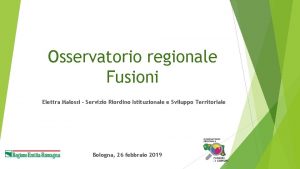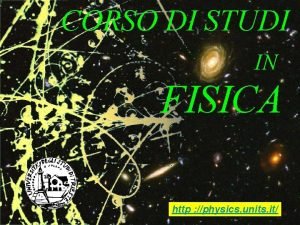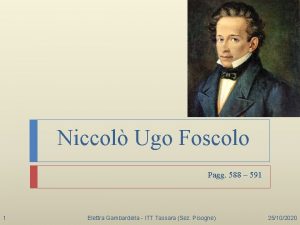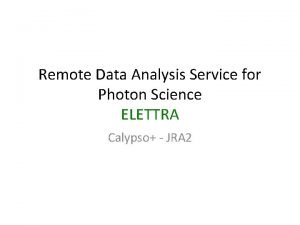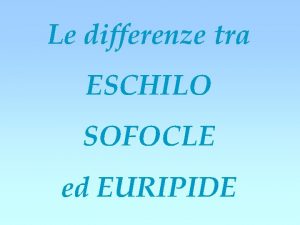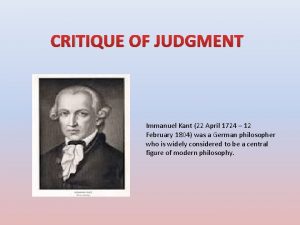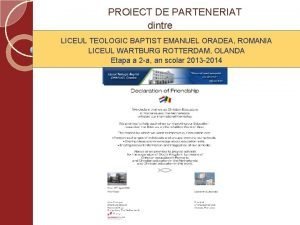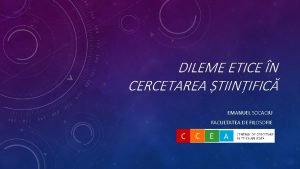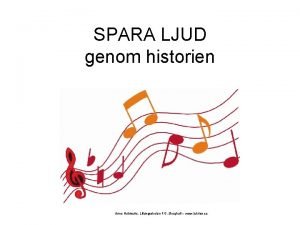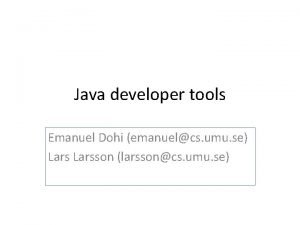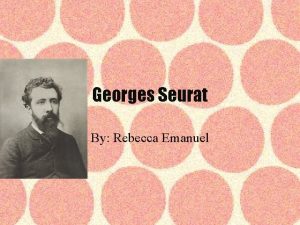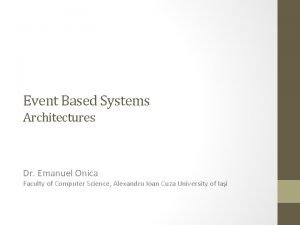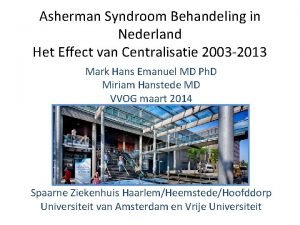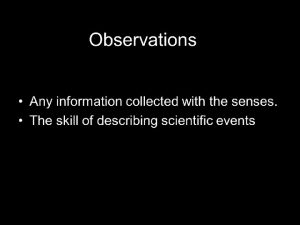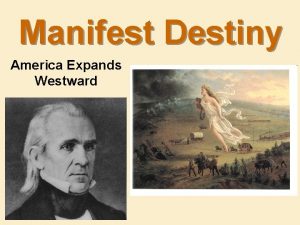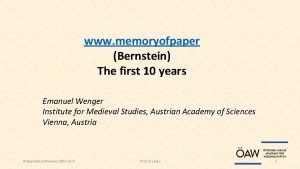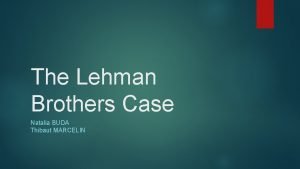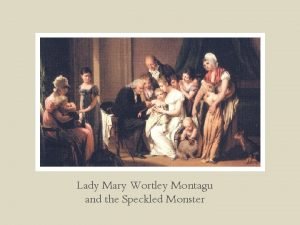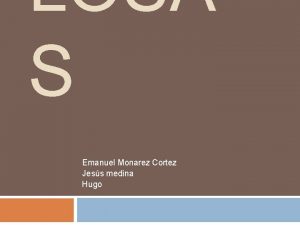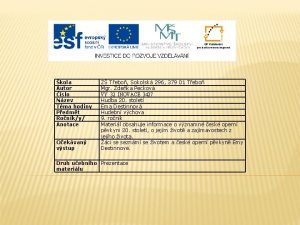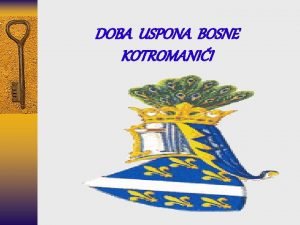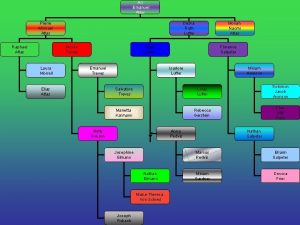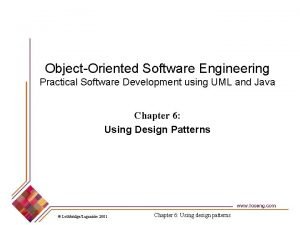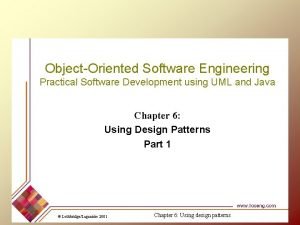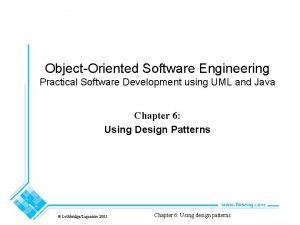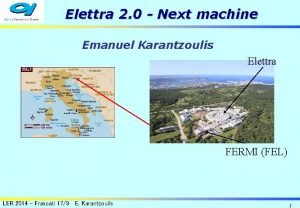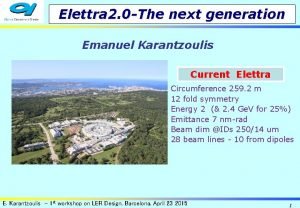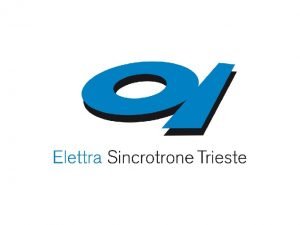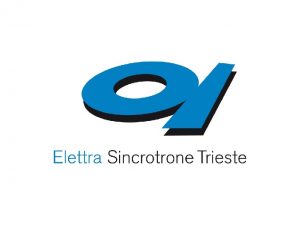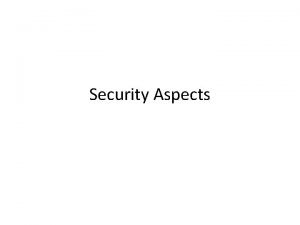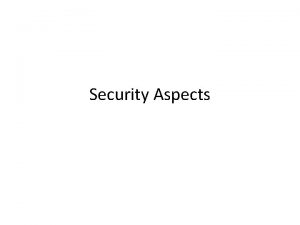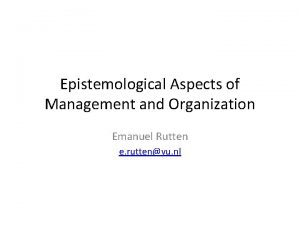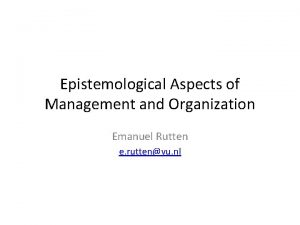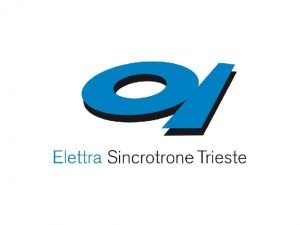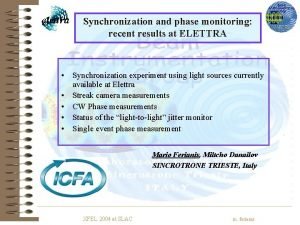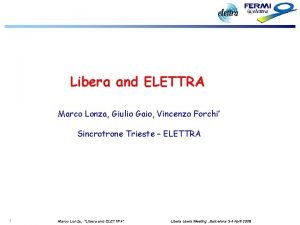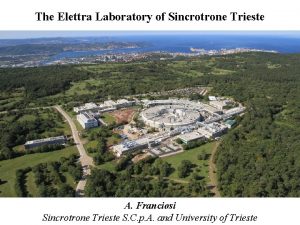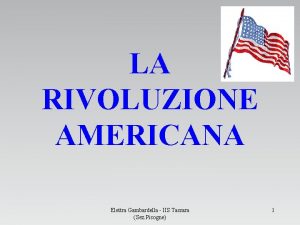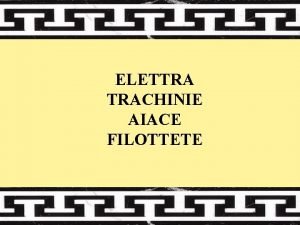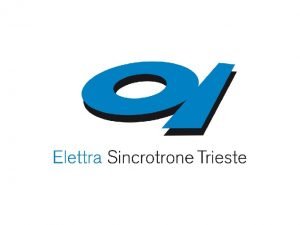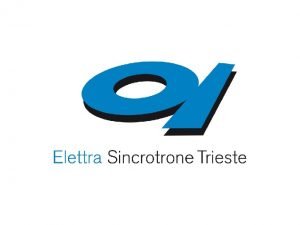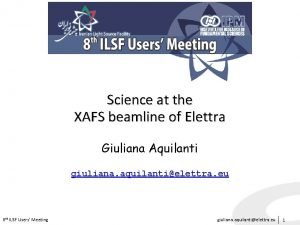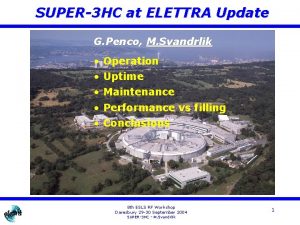Design Aspects for Elettra 2 0 Emanuel Karantzoulis
































- Slides: 32

Design Aspects for Elettra 2. 0 Emanuel Karantzoulis Outline: • • • Elettra PHANGS Workshop Trends and requirements Lattice analysis Best lattices Current Elettra 2. 0 Short pulses Brilliance and IDs Schedule and dark time Conclusions 1 Design Aspects for Elettra 2. 0 , 7 th LER workshop, CERN Emanuel Karantzoulis, 15 01 2018

Elettra Sincrotrone Trieste in brief: 2 complementary Light Sources Elettra FERMI 2 Design Aspects for Elettra 2. 0 , 7 th LER workshop, CERN Emanuel Karantzoulis, 15 01 2018

Elettra § Third generation light source (DBA - 259. 2 m) , open to external users since 1994 § The machine complex initially made of a 1 Ge. V linac and a storage ring operating at 2. 0 (7 nm-rad) and since 1998 also at 2. 4 Ge. V, in 2008 built a full energy injector (2. 5 Ge. V booster plus 100 Me. V linac) and since 2010 operates in top-up mode. Linac + Booster (114 m) Storage Ring (259 m) Operate also a storage ring FEL and superconducting systems ( a 3. 5 T wiggler and a third harmonic cavity ) 3 Design Aspects for Elettra 2. 0 , 7 th LER workshop, CERN Emanuel Karantzoulis, 15 01 2018

28 Beam lines 4 Design Aspects for Elettra 2. 0 , 7 th LER workshop, CERN Emanuel Karantzoulis, 15 01 2018

PHANGS workshop – WHY? 5 Design Aspects for Elettra 2. 0 , 7 th LER workshop, CERN Emanuel Karantzoulis, 15 01 2018

Elettra Points of View Machine people Beam Lines people Users Different views but one MUST consider the whole picture in order to reach good and productive results Design Aspects for Elettra 2. 0 , 7 th LER workshop, CERN Emanuel Karantzoulis, 15 01 2018 6

SR generations and trends Generation Time period Radiation use from Energy range (Ge. V) Emittance nm-rad Average Brilliance 1 60 s and early 70 s Parasitic 0. 18 -6 500 1013 2 Mid 70 s to 80 s Dipoles 0. 7 -2. 5 100 1016 3 90 s to 2015 Wigglers and undulators 0. 7 -8 many in 2 -3 Ge. V 1 -20 1019 NGSR 2015 -2035 Undulators 2 – 6 for the moment 0. 02 -0. 5 1022 7 Design Aspects for Elettra 2. 0 , 7 th LER workshop, CERN Emanuel Karantzoulis, 15 01 2018

Next generation: Ingredients Those are partially based on the trends in this field: § Higher brilliance § High level of coherence in both planes (3 rd generation sources have only high vertical coherence), § Smaller spot size and divergence § Higher flux However not all users ask for higher brilliance and coherence. Others instead are interested in: § High field dipoles (2 T and above ) -> space § More and different types of undulators -> more space § And even… short pulses -> need for free space 8 Design Aspects for Elettra 2. 0 , 7 th LER workshop, CERN Emanuel Karantzoulis, 15 01 2018

Elettra 2. 0 requirements § The requirements were based on some interaction with the beam lines and users’ community. § A dedicated workshop on the future of Elettra was held in April 2014 to examine the various requirements. At that time the requirements were defined as follows: Design boundary conditions Easier part Beam energy: 2 Ge. V Beam intensity: 400 m. A Emittance: to be reduced by more than 1 order of magnitude Horizontal electron beam size: less than 60 µm Conserve filling patterns: multibunch, hybrid, single bunch, few bunches Keep the same building and the same ring circumference (259 -260 m) Existing ID beam lines and their position should be maintained Conserve space available for IDs: not less than that of Elettra Conserve the existing beam lines from dipoles Tougher Use the existing injectors, that means off-axis injection part 9 Design Aspects for Elettra 2. 0 , 7 th LER workshop, CERN Emanuel Karantzoulis, 15 01 2018

Search for the Elettra 2. 0 Lattice All Elettra-like multi-bend lattices have been created up to 10 BA Number of dipoles / achromat Emittance (nmrad) @ 2 Ge. V sx ( mm) @ LS sy (mm) @1% coupling @ LS 2 7 240 14 4 0. 74 (0. 63) 80 4. 5 13 (15) 5 0. 43 70 3 22 6 0. 25 (0. 19) 55 2. 2 35 (43) 7 0. 17 40 1. 9 46 8 0. 11 26 1. 7 60 9 0. 075 22 1. 5 73 10 0. 054 20 1. 3 84 Brilliance increase factor at 1 ke. V Brilliance increase factor for a well matched undulator as compared with its brilliance in the actual Elettra at 1 ke. V 10 Design Aspects for Elettra 2. 0 , 7 th LER workshop, CERN Emanuel Karantzoulis, 15 01 2018

Search for the Elettra 2. 0 Lattice Also coherence for some users Free space is important. Red: free space available for IDs in the long straight section (dispersion free) Green: free space available for IDs in the arc (dispersive) 11 Design Aspects for Elettra 2. 0 , 7 th LER workshop, CERN Emanuel Karantzoulis, 15 01 2018

Lattices fulfilling the free space criteria 4 BA 5 BA 6 BA 7 BA For optics + graphics used “OPA version 3. 81”, PSI, 2015 by A. Streun Design Aspects for Elettra 2. 0 , 7 th LER workshop, CERN 12 Emanuel Karantzoulis, 15 01 2018

S 6 BA Lattices; fulfill all criteria Current version: Emittance 0. 25 nm-rad (0. 15 if round beam) 169 ke. V/turn Dipoles are electromagnets at 0. 8 T No Longitudinal Gradient in the dipoles Free space for IDs (4. 5 + 1. 6 m ) – Energy fixed at 2 Ge. V How to save the dipole beam lines? 13 Design Aspects for Elettra 2. 0 , 7 th LER workshop, CERN Emanuel Karantzoulis, 15 01 2018

Taking care of the Dipole beam lines in S 6 BA Our MBAs use dipoles with fields of about 0. 8 T while at the actual Elettra the fields are 1. 2 T at 2 Ge. V and 1. 44 T at 2. 4 Ge. V Solutions: o Use LG dipoles with central field of ~2 T (for ~3. 3 deg in S 6 BA) and negative angle bends (anti-bends), no emittance increase o Use short wigglers, emittance increases depending on the field. For each 2 T is 2. 7% but with the SCW at 3. 5 T the increase is reduced to 1. 0% o Use separate super-bends for 5. 7 deg - > Larger emittance increase 14 Design Aspects for Elettra 2. 0 , 7 th LER workshop, CERN Emanuel Karantzoulis, 15 01 2018

S 6 BA Lattices; fulfill all criteria LG + anti-bend version: Emittance 0. 19 nm-rad ( 0. 1 if round beam ) The 3 and 4 dipoles in LG with central field at ~2. 2 T. 245 ke. V/turn The 2 and 5 dipoles in LG with central field at ~2 T. 225 ke. V/turn Free space for IDs (4. 5 +1. 55 m ) – fixed at 2 Ge. V 15 Design Aspects for Elettra 2. 0 , 7 th LER workshop, CERN Emanuel Karantzoulis, 15 01 2018

Super-bends Some beam-lines cannot use 2 T short wigglers e. g. SYRMEP (Mammography) and/or they need high critical energy ( > 8. 0 ke. V). Below is shown half of Elettra 2. 0 with 2 super-bend sections. The emittance increases from 0. 25 to 0. 37 nm rad at 3. 5 T (Ec=9. 3 ke. V). The emission angle is 5. 7 deg 16 Design Aspects for Elettra 2. 0 , 7 th LER workshop, CERN Emanuel Karantzoulis, 15 01 2018

S 4 BA Lattices Emittance 0. 73 nm-rad (0. 43 if round beam ) 207 ke. V/turn Dipoles electromagnets at 0. 8 T No LG. Large free space for IDs or other (4. 5 + 3. 4 m) LG+anti-bend version: Emittance 0. 63 nm-rad (0. 34 if round beam ) 251 ke. V/turn The 2 and 3 dipoles in LG with central field at 2. 2 T. Large free space for IDs or other (4. 5 + 2. 4 m) , lower quadrupole strengths , less magnets, larger dynamic aperture. Higher energy possible for example 2. 5 Ge. V ( but at a higher emittance). Design Aspects for Elettra 2. 0 , 7 th LER workshop, CERN Emanuel Karantzoulis, 15 01 2018 17

Comparison between S 6 BA and S 4 BA Circumference (m) Energy (Ge. V) Number of cells Geometric emittance (nm-rad) Horizontal tune Vertical tune Betatron function in the middle of straights (x, y ) m Horizontal natural chromaticity Vertical natural chromaticity Horizontal corrected chromaticity Vertical corrected chromaticity Momentum compaction Energy loss per turn (with no IDs) (ke. V) Energy spread Jx Jy JE Horizontal damping time (ms) Vertical damping time (ms) Longitudinal damping time (ms) Dipole field (T) Quadrupole gradient in dipole (T/m) Quadrupole gradient (T/m) Sextupole gradient (T/m 2) RF frequency (MHz) Beam revolution frequency (MHz) Harmonic number Orbital period (ns) Bucket length (ns) Natural bunch length ( mm, ps ) Synchrotron frequency (k. Hz) ~ 259. 2 2 12 0. 25 ( 0. 19 ) 33. 10 - 33. 30 9. 2 (9. 5, 3. 2 ) -76 -52 +1 +1 3. 44 e-004 156 6. 67 e-004 1. 52 1. 00 1. 48 14. 8 22. 9 15. 0 <0. 8 <15 <50 <3500 499. 654 1. 1566 432 864. 6 2 2. 0 , 6. 5 5. 6 (@2 MV) Circumference (m) Energy (Ge. V) Number of cells Geometric emittance (nm-rad) Horizontal tune Vertical tune Betatron function in the middle of straights (x, y ) m Horizontal natural chromaticity Vertical natural chromaticity Horizontal corrected chromaticity Vertical corrected chromaticity Momentum compaction Energy loss per turn (with no IDs) (ke. V) Energy spread Jx Jy JE Horizontal damping time (ms) Vertical damping time (ms) Longitudinal damping time (ms) Dipole field (T) Quadrupole gradient in dipole (T/m) Quadrupole gradient (T/m) Sextupole gradient (T/m 2) RF frequency (MHz) Beam revolution frequency (MHz) Harmonic number Orbital period (ns) Bucket length (ns) Natural bunch length ( mm, ps ) Synchrotron frequency (k. Hz) ~ 259. 2 2 (pos. 2. 5 ) 12 0. 73 ( 0. 63 ) 24. 3 15. 2 (9, 3 ) -46 -58 +1 +1 4. 43 e-004 210 7. 53 e-004 1. 43 1. 00 1. 57 11. 46 16. 46 10. 52 <0. 8 <12 <36 <3500 499. 654 1. 1566 432 864. 6 2 2. 5 , 8. 4 6. 33 (@2 MV 18 Design Aspects for Elettra 2. 0 , 7 th LER workshop, CERN Emanuel Karantzoulis, 15 01 2018

S 6 BA vs. S 4 BA Parameter Units S 6 BA S 4 BA Circumference m 259. 2 Energy Ge. V 2 2 (2. 4) Horizontal bare emittance pmrad 250 - 190 730 - 630 Vertical pmrad 2. 5 7. 3 emittance @1% Beam size @ ID (sx, sy) mm 43 , 3 80 , 4. 5 Beam size at short ID mm 45 , 3 70, 4. 5 Beam size @ Bend mm 17 , 7 35 , 9 Bunch length (zero current) ps Energy spread DE/E % Bending angle half achromat degree Free space for IDs / section m Design Aspects for Elettra 2. 0 , 7 th LER workshop, CERN 5. 6 (70 -100 with 3 HC ) 8. 4 (70 -100 with 3 HC ) 0. 075 3. 6 and 2 x 5. 7 5. 6 and 9. 4 4. 5 – (1. 6 or 1. 5) 4. 5 – (3. 4 or 2. 4) Emanuel Karantzoulis, 15 01 2018 19

S 6 BA S 4 BA Dipoles 72 48 Quadrupoles 192 144 Sextupoles 240 192 Combined correctors (120) (96) Skews and correctors 72 72 total 576 (696) 456 (552) Actual machine 24 + 108 + 72 + 88 = 292 Magnets and PS’s air cooled Power supplies: individual (50 A - 20 V ) Dipole power each (422 - 700 W) Quad power each range ( 60 - 178 W) Sextupole power each range (73 - 222 W) 20 Design Aspects for Elettra 2. 0 , 7 th LER workshop, CERN Emanuel Karantzoulis, 15 01 2018

Short pulses, why in SR? There is a range of time resolved experiments that require high repetition rate without damaging the sample Courtesy M. Kiskinova Design Aspects for Elettra 2. 0 , 7 th LER workshop, CERN Emanuel Karantzoulis, 15 01 2018 21

Controlling the electron pulse Additionally the bunch length changes with the intensity. The smaller the emittance is, the stronger the magnets should be resulting in smaller vacuum chamber cross sections which in its turn increases the impedance of the vacuum chamber and amongst other problems lengthens the electron bunch. Threshold current (m. A) / VRF MV bunch For higher than threshold BL (sigma) ps 2. 4 0. 57 5 3 0. 5 4. 4 4 0. 43 3. 8 14 0. 23 2 Increasing the main RF voltage or decreasing alpha cannot serve all users simultaneously due to intensity limitations -> there are solutions (A. Jankowiak talk on BESSY VSR ) 22 Design Aspects for Elettra 2. 0 , 7 th LER workshop, CERN Emanuel Karantzoulis, 15 01 2018

Elettra 2. 0 Lattice Best configuration up to now, satisfying all requirements, including the free space for IDs is based on a special six-bend achromat (S 6 BA). Versions that minimize interferences and induce minimal position shift of the dipole beam lines were examined. Elettra 2. 0 23 Design Aspects for Elettra 2. 0 , 7 th LER workshop, CERN Emanuel Karantzoulis, 15 01 2018

Magnets The short intra-magnet available space led us to design magnets with Lm≈Lp (max 10 mm difference). Use of new materials such as Cobalt – Iron alloys will also be considered. A quadrupole prototype is under construction at CERN The bending integrated quadrupole component is done by only the pole profile geometry. In order to optimize space and performances, different coil and frame geometries are evaluated. Space between the pole terminations will be employed in order to obtain the requested frame stiff. The quadrupole designs were developed with the vacuum chamber in order to resolve all the possible transversal interferences (beam lines). Asymmetric poles geometry has been opted. The sextupole magnets have the higher design issue. The transversal interferences between coils and vacuum chamber are resolved. Ref. D. Castronovo (Opera) Design Aspects for Elettra 2. 0 , 7 th LER workshop, CERN Emanuel Karantzoulis, 15 01 2018 24

Other facts ü Use of some permanent magnet dipoles is also considered ü Including errors and the existing IDs the dynamic aperture is ± 7 mm horizontally and ± 2. 5 mm vertically. This aperture permits off axis injection with an efficiency of more than 95% ü Lifetime is 6 hours at 2 Ge. V and with the third harmonic cavity (3 HC, bunch lengthening ) will be 18 h ü Intra-beam scattering increases the emittance by 90% at 400 m. A however using the 3 HC the effect is reduced down to 40% ü Vacuum chamber best compromise (considering also the magnet power) seems to be a circular cross section with 25 mm external diameter. For the long straight sections the current vertical dimension of 9 mm is assumed. Material stainless steel and aluminium. ü The impedances of the low gap chambers and the rf transitions dominate. Estimated 230 kohm/m for both planes. Microwave threshold 0. 6 m. A for a bunch length of 5 ps. 25 Design Aspects for Elettra 2. 0 , 7 th LER workshop, CERN Emanuel Karantzoulis, 15 01 2018

Elettra and Elettra 2. 0 Parameter Units Elettra 2. 0 Circumference m 259. 2 Energy Ge. V 2 - 2. 4 2 Horizontal bare emittance pmrad 7000 190 -250 Vertical pmrad 70 (1% coupl) emittance 2. 5 Beam size @ ID (sx, sy) mm 245 , 14 (1% coupl) 43 , 3 Beam size at short ID mm 350 , 22 (1% coupl) 45 , 3 Beam size @ Bend mm 150, 28 (1% coupl) 17 , 7 Bunch length (zero current) ps 17 (100 with 3 HC ) Energy spread DE/E % Bending angle half achromat degree Design Aspects for Elettra 2. 0 , 7 th LER workshop, CERN 5. 6 (70 -100 with 3 HC ) 0. 08 0. 07 15 3. 6 and 2 x 5. 7 Emanuel Karantzoulis, 15 01 2018 26

Nanospectroscopy ID (46 mm, N=98, 4. 5 m) Present Elettra (2 Ge. V) vs Elettra 2. 0 4 -BA and Elettra 2. 0 6 -BA Courtesy L. Rebuffi and A. Bianco 27 Design Aspects for Elettra 2. 0 , 7 th LER workshop, CERN Emanuel Karantzoulis, 15 01 2018

Brilliance with existing and future IDs (S 6 BA) U 100 period = 100 mm, Performance in case of Nper = 45, Kmax = 9, three well matched hypothetical insertion U 50 period = 50 mm, devices (brilliance, flux Nper = 90, Kmax = 4. 5, and coherent flux ): U 25 period = 25 mm, Nper = 180, Kmax = 2. 3 Design Aspects for Elettra 2. 0 , 7 th LER workshop, CERN Ref: B. Diviacco Emanuel Karantzoulis, 15 01 2018 28

Scheduling At the moment 5 years and 9 months with 50 FTEs are considered sufficient for the completion of the project of which 15 FTEs will be new positions. This period includes final study and drawings, purchasing and construction, decommissioning of the old machine, installations and commissioning of Electra 2. 0. Additionally the system leaders were asked to consider also the Electra 2. 0 requirements when upgrades of the present machine are needed. 2014 29 Design Aspects for Elettra 2. 0 , 7 th LER workshop, CERN Emanuel Karantzoulis, 15 01 2018

Dark period is estimated to 18 months. Users don’t like it asked if it can be avoided? How? Modular installations? Theoretically maybe possible, but practically it must be extremely complicated so the answer must be NO 30 Design Aspects for Elettra 2. 0 , 7 th LER workshop, CERN Emanuel Karantzoulis, 15 01 2018

Summary v For Elettra 2. 0 our S 6 BA optics is chosen as the closest to the various requirments (up to now) v The optics is very flexible and can accommodate a number of super-bends. v Installation of insertion devices also possible in the middle of the arc. For the moment the space available there, is 1. 6 m. v The 1. 0 version of the Elettra 2. 0 conceptual design report is available. v Other types of MBAs are also under evaluation v Project approved by the Italian Government!!! Design Aspects for Elettra 2. 0 , 7 th LER workshop, CERN Emanuel Karantzoulis, 15 01 2018 31

THANK YOU FOR YOUR PATIENCE
 Egg för emanuel
Egg för emanuel Elettra malossi
Elettra malossi Units fisica
Units fisica Elettra sepolcri
Elettra sepolcri Vuo elettra
Vuo elettra Eschilo sofocle euripide differenze
Eschilo sofocle euripide differenze Fase fallica bambini
Fase fallica bambini Emanuel kanti
Emanuel kanti Liceul teologic baptist emanuel
Liceul teologic baptist emanuel Dileme etice in cercetare
Dileme etice in cercetare Elektro emanuel
Elektro emanuel Emanuel dohi
Emanuel dohi Rebekah emanuel
Rebekah emanuel Emanuel onica
Emanuel onica Emanuel syndrome
Emanuel syndrome Chepuwa in forensic medicine
Chepuwa in forensic medicine Emanuel leutze westward the course of empire
Emanuel leutze westward the course of empire Filacad
Filacad George washington crossing the delaware painting
George washington crossing the delaware painting Emanuel lehman
Emanuel lehman Handlungskompetenzorientierung
Handlungskompetenzorientierung Emanuel timoni
Emanuel timoni Doctor hugo castro medina
Doctor hugo castro medina Emanuel kittl
Emanuel kittl Evanyely zamorano
Evanyely zamorano Emanuel coman tcd
Emanuel coman tcd Stjepan 2 kotromanic
Stjepan 2 kotromanic Ari emanuel biography
Ari emanuel biography Recurring aspects of designs are called design
Recurring aspects of designs are called design The recurring aspects of designs are called design
The recurring aspects of designs are called design The recurring aspects of designs are called design
The recurring aspects of designs are called design Kontinuitetshantering i praktiken
Kontinuitetshantering i praktiken Typiska drag för en novell
Typiska drag för en novell

